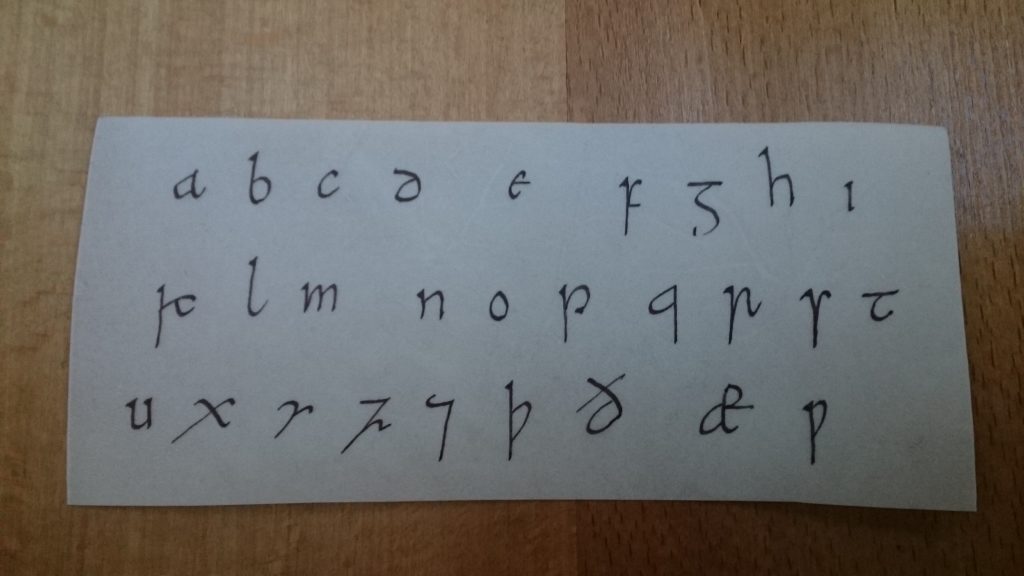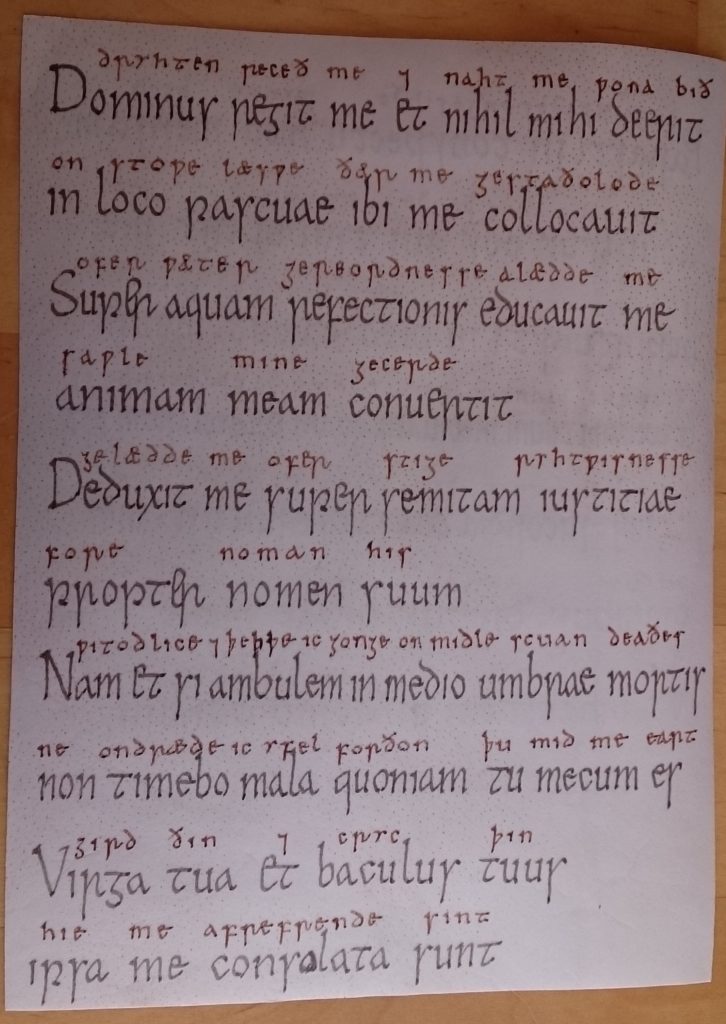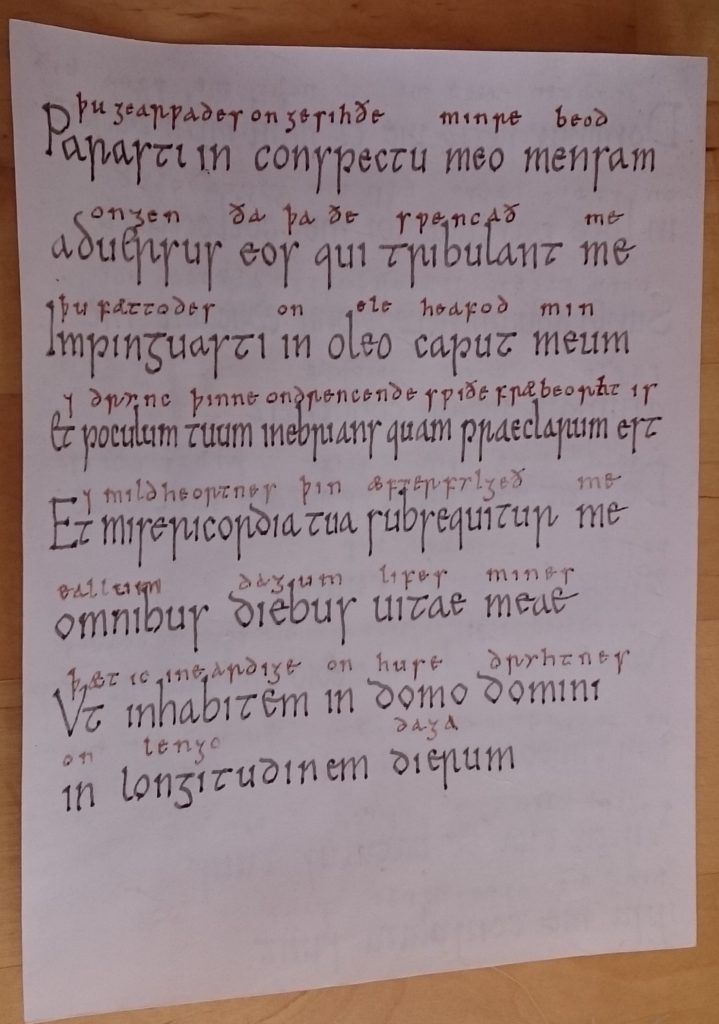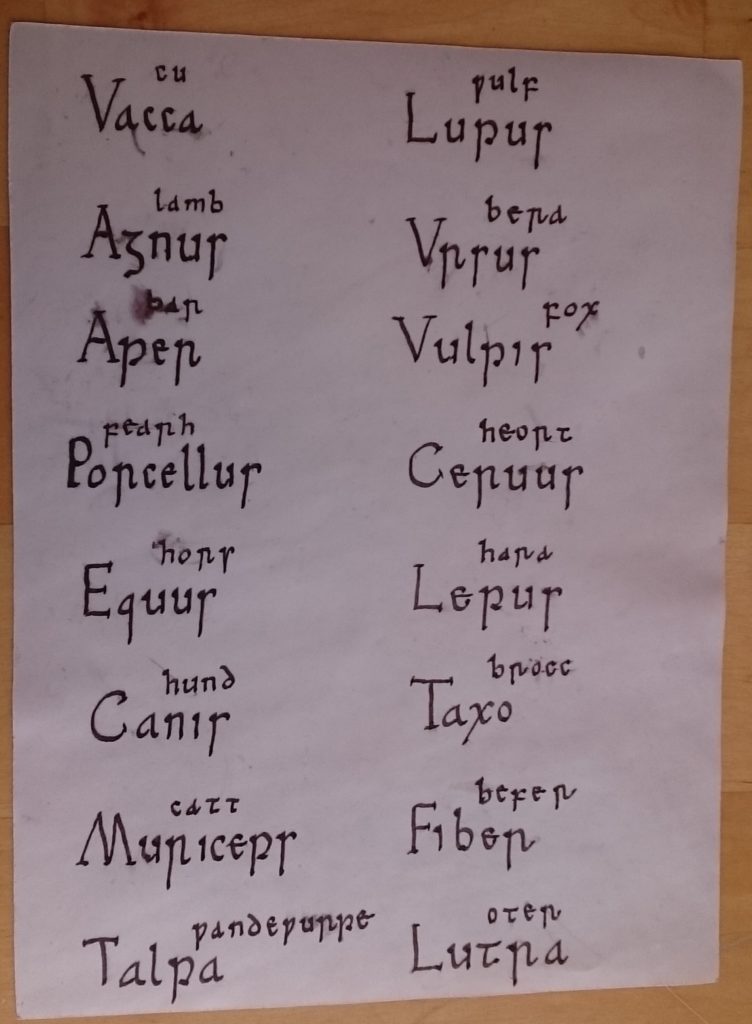Literacy was a key part of monastic life, for women as well as men. Sister Æscwynn is the magistra, or teacher, at Rumwoldstow. The picture below shows the alphabet which Sister Æscwynn uses to teach novices how to read. Nuns need to be able to read so that they can at least follow the Latin of the psalms, which they sing every day.
The alphabet is based on the Latin alphabet. There is no ‘j’ or ‘v’, as ‘i’ and ‘u’ could be used instead. The Anglo-Saxon alphabet includes extra letters and symbols, added on to the end of the Latin alphabet. What looks like the number 7 is a symbol used for the word ‘and’. There are two letters for ‘th’ sounds: the letter thorn, ‘þ’ (used for the sound in ‘thorn’ and ‘thick’) and the letter eth, ‘ð’ (used for the sound in ‘the’ and ‘then’). The letter æsc or ash, ‘æ’, was pronounced like the ‘a’ in ‘ash’ and ‘add’. The letter wynn, ‘ƿ’ was used for ‘w’.

The pictures below show Psalm 23 (The Lord is my shepherd). The main text is in Latin, as the nuns would have sung it. Added above the Latin is an Old English translation, or gloss. It was common at this period to use the psalms to teach novices how to read and to help them learn Latin. There are a number of Anglo-Saxon psalters with Old English glosses and this particular Old English translation is taken from the Junius Psalter1, which is contemporary with the founding of Rumwoldstow.


The picture below shows a page from a glossary. A glossary was a kind of Anglo-Saxon Latin to Old English dictionary, but often with words grouped by meaning, rather than alphabetically. Glossaries were one of the most common educational textbooks found in Anglo-Saxon monasteries. This page has names of animals in Latin, with Old English equivalents written above. The animals in the first column are: cow, lamb, boar, piglet, horse, dog, cat, and mole. The animals in the second column are: wolf, bear, fox, stag, hare, badger, beaver, and otter.

Below are some links with more information about the literacy of Anglo-Saxon nuns and also anything to do with manuscripts, books and illustrations.
A medieval woman’s work left blue pigment on her teeth.
https://arstechnica.com/science/2019/01/medieval-illuminated-manuscripts-were-also-womens-work/
The skeleton reveals the hidden role of women in producing medieval manuscripts.
Female Scribes in Early Manuscripts
https://blogs.bl.uk/digitisedmanuscripts/2017/03/female-scribes-in-early-manuscripts-.html
Book Production and Monastic Reform in Twelfth-Century Bavaria
http://assets.cambridge.org/97805217/92431/excerpt/9780521792431_excerpt.htm
Cambridge University Press. Exceprt from Women as Scribes by Alison I. Beach